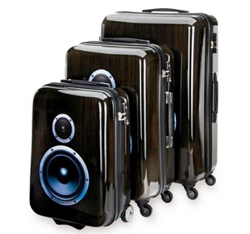I’ll admit I’m no expert on portable church. I’ve done it in the past, but the system was pretty simple.
I have, however, spent 10 years on and off the road doing live production. Currently, we set up and take down almost our entire system at Upper Room, so I have some thoughts on making it easier.
Organization
I believe this is important in any production setting, but it’s vital in a portable church setting. You simply don’t have time to be looking for things when you have an hour or two to set the whole system up. Everything needs a place, and must be returned there every week.
It’s also important that everyone knows the system, so they can be both efficient during set up and put things back properly afterward. Take some time to analyze the needs of the system and come up with a way to pack, unpack, store and transport the gear in a way that makes sense. Refine if for a few weeks in actual use, then lock it down.
Process
This is the other side of the organization coin. It’s important to develop a process and stick to it. Set the system up the same way, week after week.
How you do it will vary based on the setting, but work it out so that it is both efficient and repeatable. Figure out a way to minimize the trips between FOH and the stage. Place cases and equipment where they will be needed and don’t waste motion.
Again, refine it for a few weeks and lock it down. Teach everyone who will be involved the process and make sure they follow it. Eventually, you’ll be able to do it in your sleep.
Pre-Cable As Much As Possible
When I started at Upper Room, the only cables we had to work with were 25-foot and 50-foot mic cords. Each week, we would pull out eight 25-foot cables to wire the drum kit—which was 3 feet from the snake. So that was 200 feet of cable to go 3 feet.
We also ran between five and seven 50-foot cables from one side of the stage to the other. So every week we laid and picked up nearly 500 feet of mic cord.
After observing this for a while, I built a 12-channel sub snake to run from one side of the stage to the other, and a bunch of 1- to 3-foot cables. Now we drop the sub snake right where we need it and use a few 1-foot cables to patch in DIs. I also built some 12-foot cables for mics on that side.
Finally, we built what we call our drum loom. It’s a bundle of cables wrapped up in loom material. Cables come out at various points for the drum mics. It’s just the right length to go from the snake to the drum mics, and takes literally 30 seconds to deploy and less than a minute to pick up.
Because everything is labeled on both ends, it’s easy to troubleshoot a mis-patch. We now lay out and pick up less than 50 lineal feet of cable each week. And because it’s all labeled, it’s easy to train new volunteers to do it.
I’ve used this same technique with video systems as well. Rather than running 10 BNC cables from one rack to another each time, I bundled them together and built bulkheads to patch them into. Set up time dropped from 20 minutes to two.





















